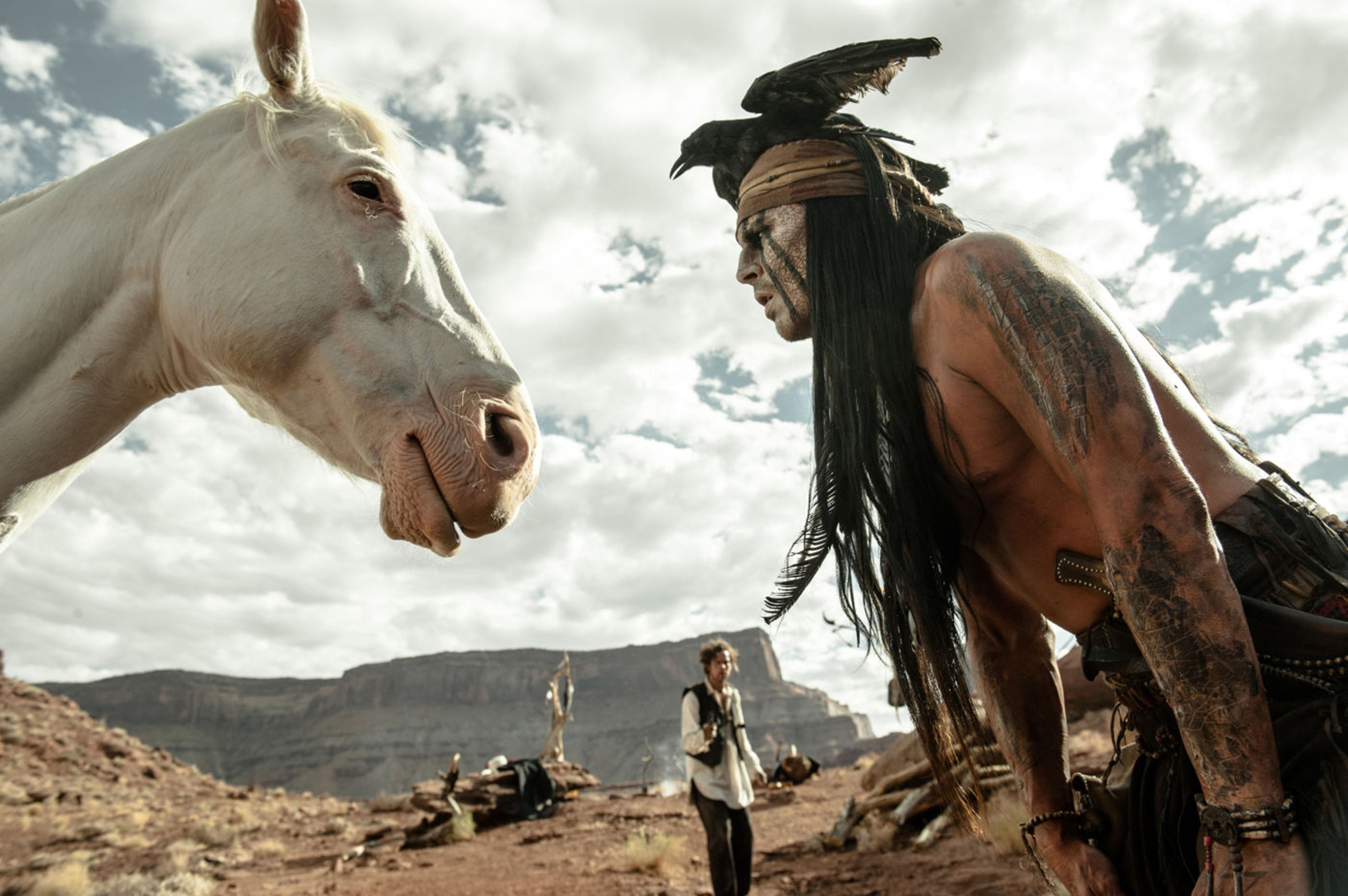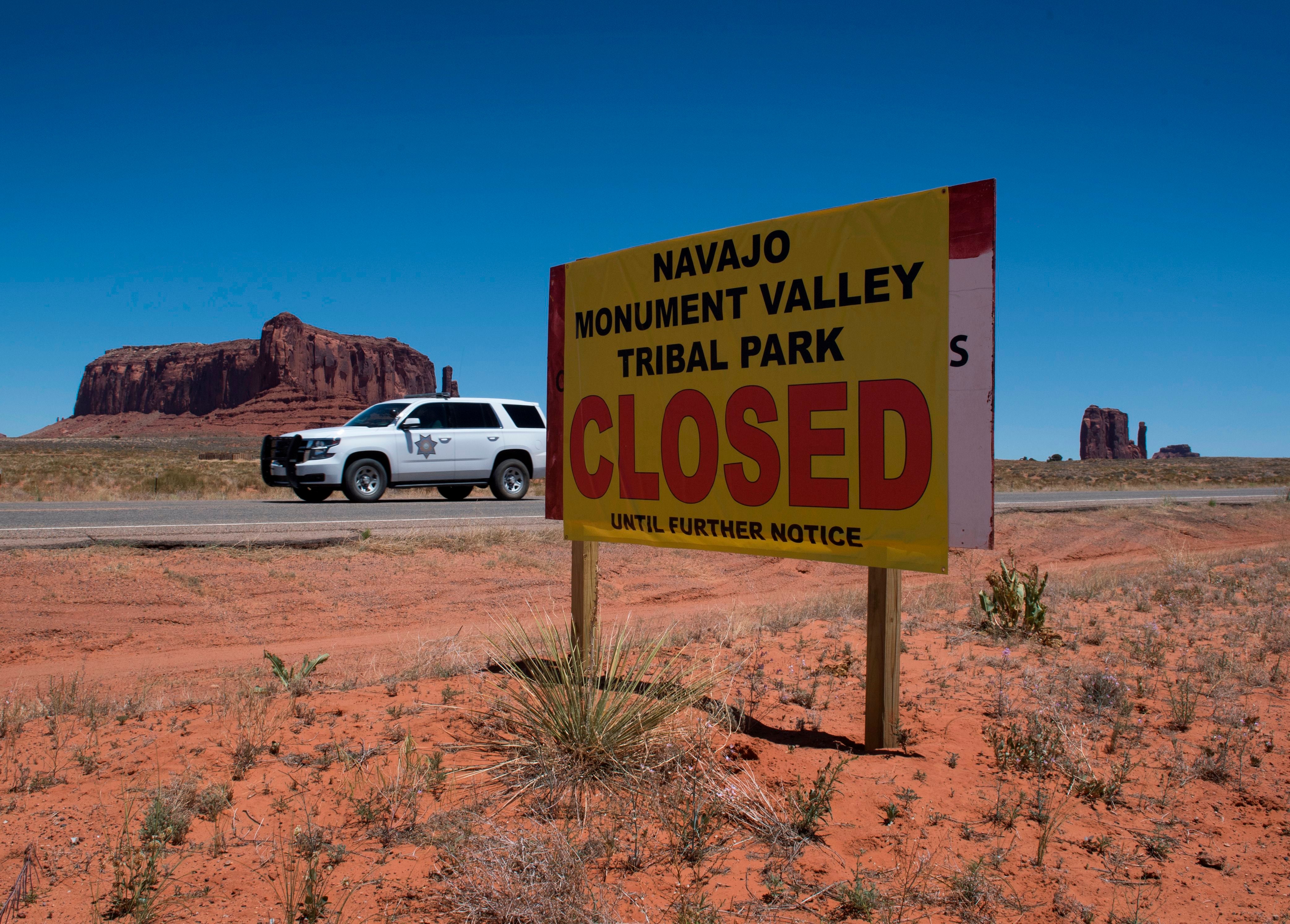Monument men: The good, the bad and the ugly sides of how the Valley has been portrayed in film
As a new documentary launches about the many different ways Monument Valley has been used on screen, Geoffrey Macnab looks at why we can’t watch westerns so innocently any more

There is one very disconcerting sequence in The Taking, Alexandre O Philippe’s new documentary about the history of Monument Valley in film. Philippe shows scenes from old John Wayne westerns in which the landscapes have been digitally scrubbed out. Instead of those craggy, imposing red buttes and mesas on the Arizona-Utah border that audiences know so well from Stagecoach (1939), She Wore a Yellow Ribbon (1949) and The Searchers (1956), there is just a blank background. It makes a huge difference. Wayne is still there in the foreground but, without the majestic backdrops, the magic dissipates and the star himself seems diminished. This montage reminds us how crucial Monument Valley was to John Ford’s vision of the west.
Philippe’s film, premiering in the London Film Festival later this month, is at once a homage to the filmmakers who’ve used Monument Valley in such evocative fashion and a searing critique of their cultural insensitivity. This was Navajo territory and yet few of the movies properly delve into the plight of the Native Americans whose land was wrested away from them.
Strangely, the very first movie to shoot in Monument Valley, George Seitz’s The Vanishing American (1925), adapted from a Zane Grey novel of the same name, acknowledged the suffering in the Navajo Nation in a way that many of its successors did not. “In a western state, far from the present haunts of men, lies a stately valley of great monuments of stone,” reads the portentous title sequence. Even in the 1920s, the guilt and bad faith felt by Hollywood about white America’s treatment of the Native Americans was palpable. In the film, the US government subjugates the Navajo people, who are forced to live on a reservation. Bizarrely, the heroic Navajo (Richard Dix in an early example of a white actor playing a Native American) then ends up fighting in the US army in the trenches of the Somme.
The Vanishing American was made 14 years before Ford shot his first film in Monument Valley, Stagecoach, in 1939. Ford loved it there. “It has rivers, mountains, plains, desert, everything the land can offer,” he said in one interview in the early 1960s. “I feel at peace there. I have been all over the world, but I consider this the most complete, beautiful and peaceful place on Earth.”
The Irish-American director claimed that he was very close to the Navajos and that his movies gave them work, money and food at a time when they otherwise might have starved. When he was asked in a 1970 interview by writer and historian Philip Jenkinson whether he regarded the systematic destruction of their way of life as a “blot on American history”, he refused to answer. “My sympathy is all with the Indians,” Ford said. “Do you consider the invasion of the Black and Tans in Ireland a blot on English history? Being Irish, it is my prerogative to answer a question with a question.”
The Navajos treated Ford with reverence. He was made an honorary chief and given the name Tall Solider. In his films, though, the Navajos are shown again and again being slaughtered by cowboys and cavalry officers. Philippe’s documentary addresses this relentless killing head on, and is bound to make audiences question the way they watch Ford’s Monument Valley westerns.
“We’re starting to have a dialogue about equality,” Philippe tells me, citing Black Lives Matter and #MeToo as examples, “but we’re not talking very much about Native Americans, the way they’ve been treated and continue to be treated and the way they’ve been represented and continue to be represented in movies, and the damage this does to them.”
There is a striking tension between how film critics talk about Ford’s westerns and how they are described by a Navajo academic like Jennifer Nez Denetdale or Liza Black, an author and professor of Native American studies who wrote the recent book, Picturing Indians: Native Americans in Film, 1941-1960. They make it very clear that there is no easy way to deal with the racist violence in Ford’s movies. You can’t pretend it isn’t there, even when the films are masterpieces.
Ford set a template for how Monument Valley would be depicted on screen by future filmmakers. Whether it’s Chevy Chase stranded in the valley and goofily looking for shops in National Lampoon’s Vacation (1983), the giant robots wreaking havoc among the rocks in Transformers: Age Of Extinction (2014) or Johnny Depp in Tonto outfit in the 2013 big screen version of The Lone Ranger, countless movies, commercials and pop promos owe an obvious debt to Ford.

When Sergio Leone was making Once Upon a Time in The West (1968), he made sure to include shots of Monument Valley that directly matched those in Ford’s pictures. As Christopher Frayling points out in his biography of Leone, the Italian director and his crew stayed at the same motel [the Goulding Trading Post] where Ford and his repertory company had been based.
All those filmmakers trying to emulate Ford were buying into the myth of Monument Valley rather than the reality. Ford’s westerns took enormous liberties, not least with the spatial dimensions. In The Searchers, for example, Wayne’s Ethan Edwards goes on an epic journey lasting many years in search of his niece, who has been abducted by the Comanches. In reality, his quest involved him riding in circles around the rocks and crags of Monument Valley, but never actually venturing more than a few hundred yards from where he started. When this is pointed out, it immediately seems obvious. Nonetheless, audiences don’t notice Ford’s creative and highly manipulative use of geography.
“There’s two kinds of thinking, logical thinking and magical thinking, and myth triggers magical thinking… you no longer pay attention to your logical mind,” Philippe describes the way viewers hoodwink themselves when they get caught up in Ford’s universe.
“It’s this fabricated place, this completely imagined west,” the director continues. “[But] there is something about this myth of the west that is really inspiring. I’m not trying to shoot down this idea. I am still a fan of westerns. I always will be.” He has visited Monument Valley several times and says it is every bit as awe-inspiring as he had hoped. “We went back when the park was closed because of Covid. The Navajos were hit very, very hard by Covid.” He talks of the surreal sight of this vast space, familiar from so many films, with a “closed” sign in front of it.

Philippe is a strong admirer of Ford. “I really hope that my film does not in any way suggest we should cancel John Ford,” he says. Instead, he talks about “opening up dialogue” about Ford’s depictions of Monument Valley, and ensuring that the voices of the Navajos are heard in discussions of Ford’s legacy.
“It’s a delicate dance, a film like this, and obviously it is very important to have the input of Native Americans who have studied the question… the legacy of John Ford’s films and the way he has chosen to represent Native Americans is really better left to Native Americans to address,” he says.
Debates around Monument Valley, westerns and Ford’s representations of Navajo culture are unlikely to have much resonance for younger cinemagoers. Not many westerns are made today, although directors like Quentin Tarantino and Jane Campion, with her new feature The Power of the Dog, have just about kept the genre alive.
Westerns had begun to seem anachronistic even within Ford’s lifetime. “There should never be any shame in liking westerns,” he once declared. By the 1960s, he was fretting that “most persons feel they have to sneak in to see a western by the side door”. However, as Ford also pointed out in several interviews, westerns were even more popular outside the US than on home soil.
While they wouldn’t be made today, Ford’s films shot in Monument Valley have long since been regarded as national treasures. Philippe’s new documentary exposes the dark and troubling aspect of those films, showing that you can’t really watch them innocently any more – but that doesn’t mean you shouldn’t watch them at all.
‘The Taking’ screens at the London Film Festival on 7 and 8 October






Join our commenting forum
Join thought-provoking conversations, follow other Independent readers and see their replies
Comments